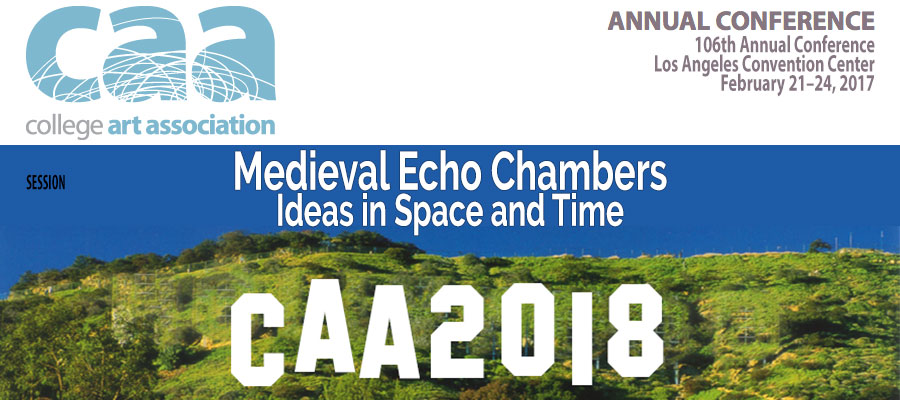Medieval Echo Chambers: Ideas in Space and Time, 106th College Art Association Annual Conference, Los Angeles Convention Center, February 21–24, 2018
In recent decades, historians of medieval art and architecture have begun to think about the ways in which the interaction of objects, images, and performances were focused by particular medieval spaces. Whether directed towards a powerful cumulative spirituality, a slowly-accruing political self-fashioning, or more everyday performances of social coherence, it is clear that medieval space had the power to bind together sometimes quite disparate objects, forming their multiple parts into coherent messages for different types of viewers.
Thus far, however, such discussions have largely chosen to focus on individual moments of such consonance, thinking through the medieval Gesamtkunstwerk in only one particular iteration. This session proposes to expand this type of thinking beyond the snapshot by considering how medieval spaces could not only encourage resonance between objects in the moment but also echo these ideas over time. How did certain medieval spaces act as ideological echo chambers? How did certain spaces encourage particular recurring patterns of patronage, reception, or material reflection? How did people in the Middle Ages respond aesthetically to the history of spaces they inhabited, and how did they imagine these spaces’ future?
We invite proposals for 20-minute papers that focus on material from any part of the Middle Ages, broadly defined both chronologically and geographically.
Paper topics might address, but are by no means limited to:
- longue durée narratives showcasing the continuous interaction of objects and architecture.
- the resonance of particular quotidian spaces—marketplaces, bridges, squares—with objects and performances over time and across evolving audiences
- relationships emerging over time between certain types of space and certain types of artist or craftsman
- documents and performances through which the evolving histories of particular spaces and objects were remembered, reiterated, repeated
- the role of the immaterial—sound, light, smell, touch—in drawing together spaces and objects, and the issues associated with charting these relationships over time
- medieval spaces that continue to foster relationships with objects of the classical world
- medieval interactions between objects and space that project into the early modern period and beyond
- ‘future spaces’, which point to times and places beyond themselves, whether an imminent reality or a more fantastical future
Session Chairs
Jack Hartnell, University of East Anglia
Jessica Barker, University of East Anglia
Session sponsored by the International Center of Medieval Art
Accepted speakers may be eligible to apply for ICMA-Kress Travel Grants to support travel to and from Los Angeles. More information.
